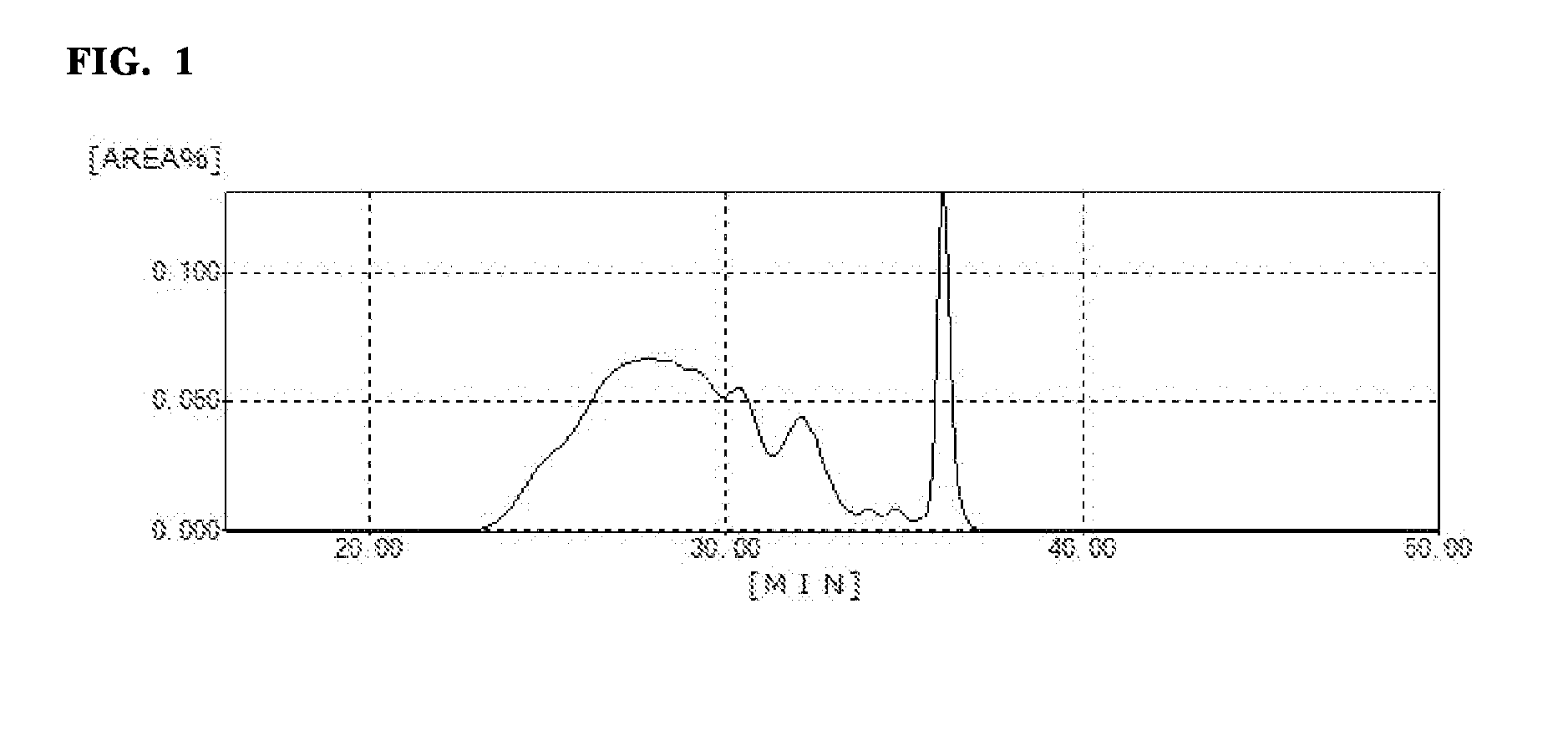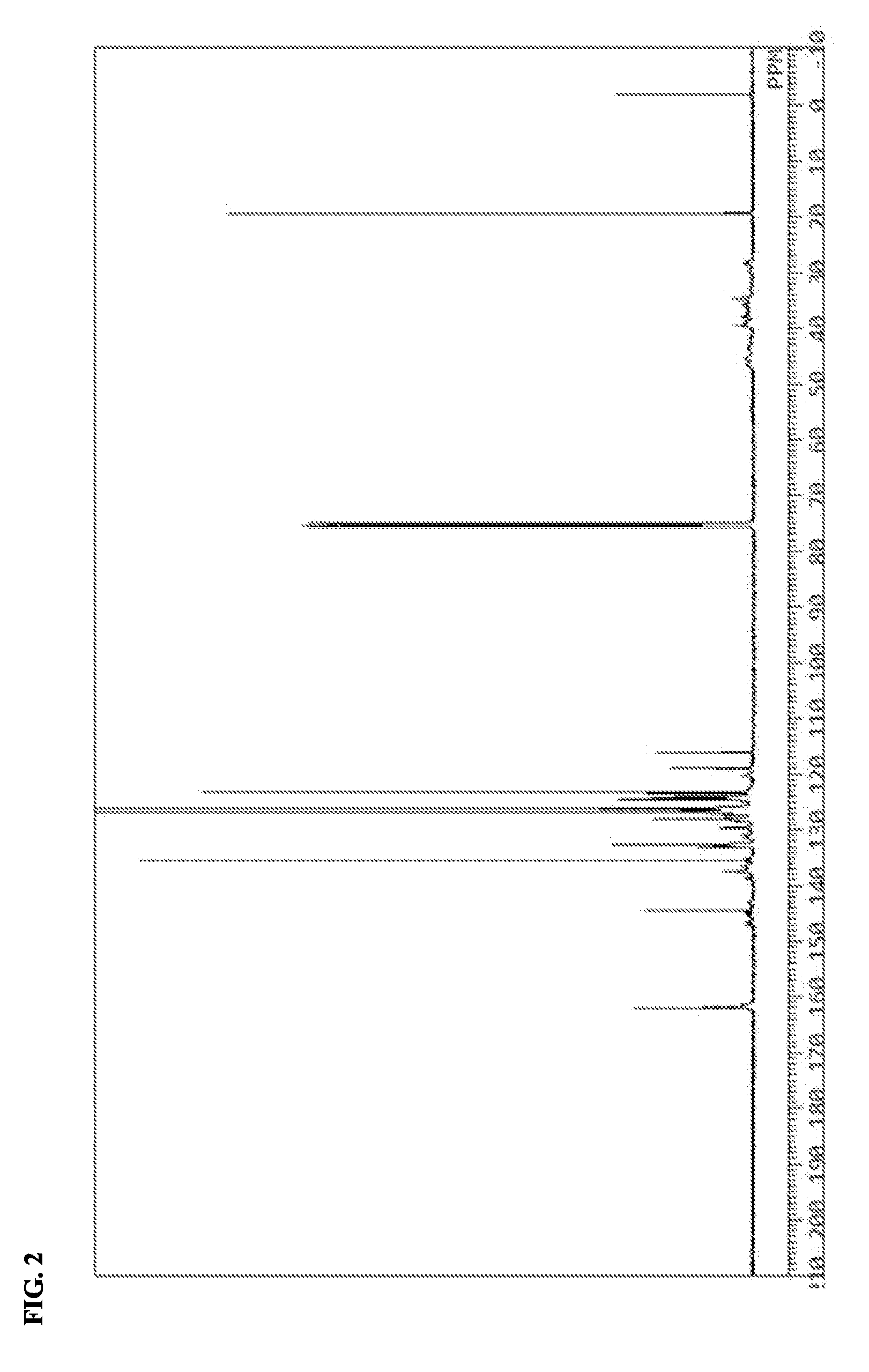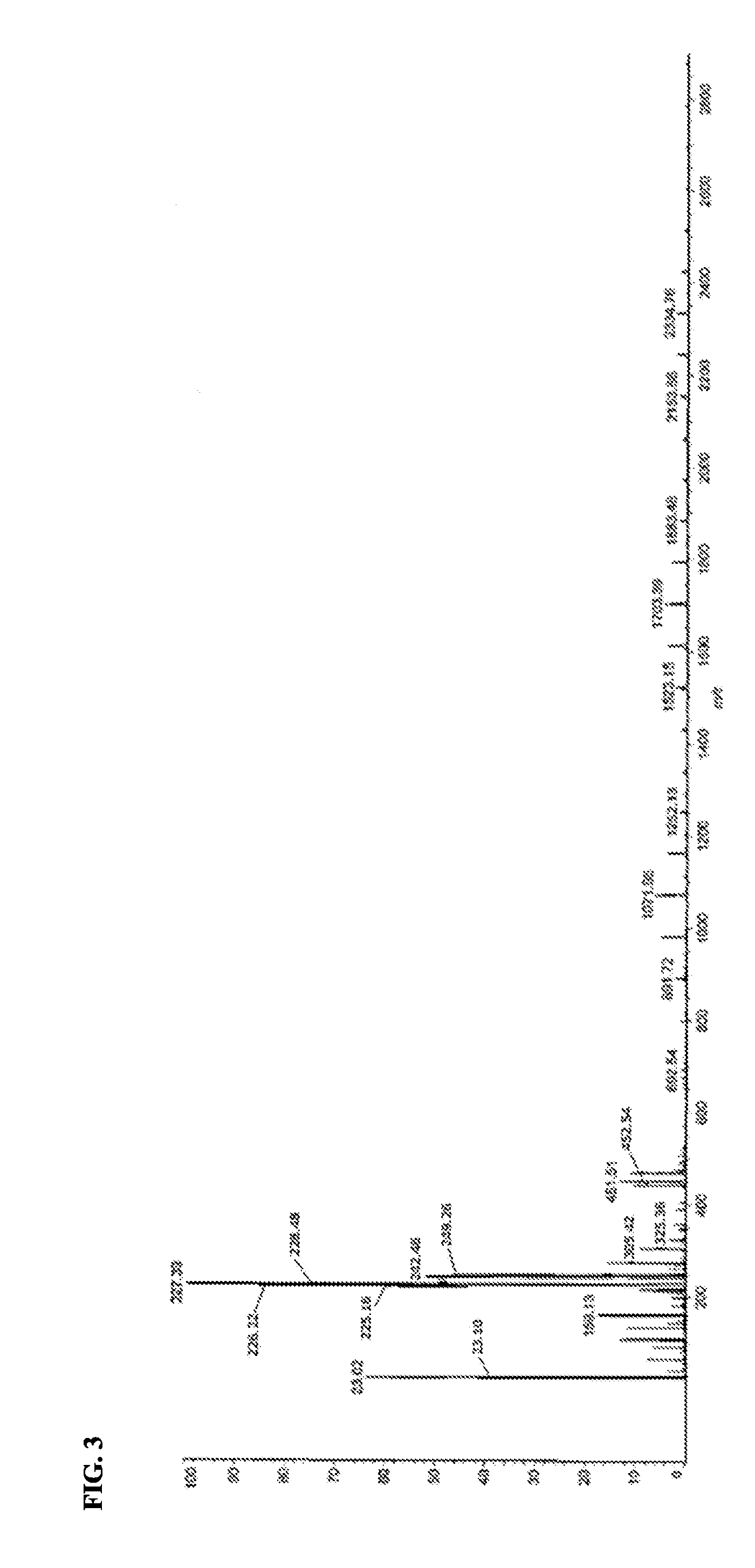Active ester resin, epoxy resin composition, cured product thereof, prepreg, circuit board, and build-up film
- Summary
- Abstract
- Description
- Claims
- Application Information
AI Technical Summary
Benefits of technology
Problems solved by technology
Method used
Image
Examples
example 1
Production of Active Ester Resin (1)
[0166]Into a flask equipped with a thermometer, a dropping funnel, a cooling pipe, a fractionating column, and a stirrer, 330 g (1.0 mol) of a dicyclopentadiene phenol resin, 216 g (2.0 mol) of benzyl alcohol, and 5 g of a p-toluenesulfonic acid monohydrate were put. The content was stirred at room temperature while nitrogen was blown. Then, the temperature was increased to 150° C., and stirring was carried out for 6 hours while generated water was distilled off to the outside of the system. After the termination of the reaction, 500 g of methyl isobutyl ketone and 5.8 g of a 20% sodium hydroxide aqueous solution were added thereto for neutralization, the water layer was subsequently removed by separation, the resulting product was washed three times with 500 g of water, and the methyl isobutyl ketone was removed under reduced pressure to obtain 502 g of an aralkyl-modified phenolic compound (α-1). The aralkyl-modified phenolic compound (α-1) was ...
example 2
Production of Active Ester Resin (2)
[0168]Into a flask equipped with a thermometer, a dropping funnel, a cooling pipe, a fractionating column, and a stirrer, 330 g (1.0 mol) of a dicyclopentadiene phenol resin, 108 g (1.0 mol) of benzyl alcohol, and 5 g of a p-toluenesulfonic acid monohydrate were put. The content was stirred at room temperature while nitrogen was blown. Then, the temperature was increased to 150° C., and stirring was carried out for 6 hours while generated water was distilled off to the outside of the system. After the termination of the reaction, 450 g of methyl isobutyl ketone and 5.8 g of a 20% sodium hydroxide aqueous solution were added thereto for neutralization, the water layer was subsequently removed by separation, the resulting product was washed three times with 450 g of water, and the methyl isobutyl ketone was removed under reduced pressure to obtain 413 g of an aralkyl-modified phenolic compound (α-2). The aralkyl-modified phenolic compound (α-2) was ...
example 3
Production of Active Ester Resin (3)
[0170]Into a flask equipped with a thermometer, a dropping funnel, a cooling pipe, a fractionating column, and a stirrer, 330 g (1.0 mol) of a dicyclopentadiene phenol resin, 21.6 g (0.2 mol) of benzyl alcohol, and 5 g of a p-toluenesulfonic acid monohydrate were put. The content was stirred at room temperature while nitrogen was blown. Then, the temperature was increased to 150° C., and stirring was carried out for 6 hours while generated water was distilled off to the outside of the system. After the termination of the reaction, 350 g of methyl isobutyl ketone and 5.8 g of a 20% sodium hydroxide aqueous solution were added thereto for neutralization, the water layer was removed by separation, the resulting product was washed three times with 350 g of water, and the methyl isobutyl ketone was removed under reduced pressure to obtain 341 g of an aralkyl-modified phenolic compound (α-3). The aralkyl-modified phenolic compound (α-3) was a brown soli...
PUM
| Property | Measurement | Unit |
|---|---|---|
| Substance count | aaaaa | aaaaa |
| Substance count | aaaaa | aaaaa |
| Substance count | aaaaa | aaaaa |
Abstract
Description
Claims
Application Information
 Login to View More
Login to View More - R&D
- Intellectual Property
- Life Sciences
- Materials
- Tech Scout
- Unparalleled Data Quality
- Higher Quality Content
- 60% Fewer Hallucinations
Browse by: Latest US Patents, China's latest patents, Technical Efficacy Thesaurus, Application Domain, Technology Topic, Popular Technical Reports.
© 2025 PatSnap. All rights reserved.Legal|Privacy policy|Modern Slavery Act Transparency Statement|Sitemap|About US| Contact US: help@patsnap.com



